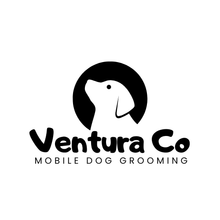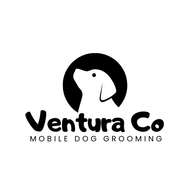OUR PURPOSE
We Strive to be the best full-service mobile dog grooming service in Ventura County, California
There are breed-specific issues that arise in dog grooming from differences in coat types, skin sensitivities, physical traits, and behavioral tendencies. Here is an overview of common grooming challenges and considerations for various dog breeds, based on their unique characteristics:
1. Double-Coated Breeds (e.g., Huskies, Malamutes, German Shepherds, Golden Retrievers)
- Issue: These breeds have a dense undercoat and a longer topcoat, which can mat and trap debris. Shaving is often problematic as it can disrupt the coat’s natural insulation, leading to overheating or sunburn.
- Grooming Challenges:
- Shedding: Heavy seasonal shedding ("blowing coat") requires frequent brushing with tools like undercoat rakes or de-shedding brushes to prevent matting.
- Matting: The undercoat can mat if not regularly brushed, especially in high-friction areas like behind the ears or under the legs.
- Bathing: Thorough drying is critical to prevent moisture-related skin issues like hot spots.
- Tips: Use a high-velocity dryer for shedding, avoid shaving unless medically necessary, and brush weekly (daily during shedding season).
2. Long-Haired Breeds (e.g., Yorkshire Terriers, Shih Tzus, Afghan Hounds)
- Issue: Silky or flowing coats are prone to tangling and matting, requiring intensive maintenance.
- Grooming Challenges:
- Matting: Daily brushing is needed to prevent knots, especially in areas like the armpits, belly, and tail.
- Haircuts: Regular trims are necessary to maintain coat length and prevent debris buildup. Precision clipping is needed for show cuts.
- Facial Hair: Breeds like Shih Tzus need regular face cleaning to prevent tear staining and infections.
- Tips: Use a slicker brush and detangling spray, schedule professional grooming every 4-6 weeks, and keep facial hair trimmed or tied up.
3. Short-Haired Breeds (e.g., Boxers, Dalmatians, Beagles)
- Issue: While low-maintenance, these breeds still shed and can have sensitive skin.
- Grooming Challenges:
- Shedding: Short, dense coats shed year-round, requiring regular brushing to manage loose hair.
- Skin Sensitivity: Breeds like Boxers are prone to allergies, which can cause irritation during grooming if harsh shampoos are used.
- Nail Trimming: Short-haired breeds often need frequent nail trims, as their active nature wears nails down less.
- Tips: Use a rubber curry brush for shedding, opt for hypoallergenic shampoos, and check skin for irritation during baths.
4. Wire-Haired Breeds (e.g., Wire Fox Terriers, Schnauzers, Airedales)
- Issue: Coarse, wiry coats require specific techniques to maintain texture and appearance.
- Grooming Challenges:
- Hand-Stripping: For show dogs, hand-stripping is needed to preserve coat texture, which is time-consuming and requires skill.
- Matting: The undercoat can mat if not properly maintained, especially in softer areas.
- Beard Maintenance: Breeds like Schnauzers need regular cleaning of facial hair to prevent odor and bacteria buildup.
- Tips: Use a stripping knife or professional groomer for hand-stripping, brush weekly with a slicker brush, and clean beards daily.
5. Curly-Coated Breeds (e.g., Poodles, Labradoodles, Soft-Coated Wheaten Terriers)
- Issue: Dense, curly coats are highly prone to matting and require frequent grooming.
- Grooming Challenges:
- Matting: Curls trap dirt and moisture, leading to tight mats if not brushed regularly.
- Clipping: Precision clipping is needed for styles like the Poodle’s show cuts or puppy clips, requiring professional expertise.
- Ear Care: Curly-coated breeds are prone to ear infections due to hair in ear canals blocking airflow.
- Tips: Brush daily with a slicker brush, schedule professional grooming every 4-8 weeks, and pluck ear hair to prevent infections.
6. Flat-Faced (Brachycephalic) Breeds (e.g., Bulldogs, Pugs, French Bulldogs)
- Issue: Facial folds and short snouts create unique grooming needs and sensitivities.
- Grooming Challenges:
- Facial Folds: Skin folds around the face trap moisture and debris, leading to infections if not cleaned regularly.
- Breathing Issues: These breeds can overheat or become stressed during grooming, requiring short sessions.
- Shedding: Despite short coats, they shed moderately and need regular brushing.
- Tips: Clean folds daily with a damp cloth and dry thoroughly, use a rubber brush for shedding, and keep grooming sessions calm and brief.
7. Hairless Breeds (e.g., Chinese Crested, Xoloitzcuintli)
- Issue: Lack of fur makes skin care the primary focus, with unique challenges.
- Grooming Challenges:
- Skin Care: Hairless breeds are prone to dryness, acne, or sunburn, requiring moisturizing shampoos and sunscreen.
- Temperature Sensitivity: They need protection from cold or heat during grooming.
- Hair Patches: Some hairless breeds have tufts (e.g., on head or feet) that need trimming to prevent matting.
- Tips: Use gentle, moisturizing shampoos, apply pet-safe sunscreen for outdoor time, and trim sparse hair carefully.
8. Giant Breeds (e.g., Great Danes, Mastiffs, Newfoundlands)
- Issue: Large size and heavy coats (in some cases) make grooming physically demanding.
- Grooming Challenges:
- Coat Maintenance: Breeds like Newfoundlands have thick, double coats that require extensive brushing to prevent matting.
- Nail Trimming: Large dogs have thick nails that are harder to cut and may require heavy-duty clippers.
- Skin Folds: Breeds like Mastiffs have loose skin that needs cleaning to prevent infections.
- Tips: Use sturdy grooming tools, groom in short sessions to manage size, and check skin folds for irritation.
9. Behavioral Considerations Across Breeds
- Anxiety: Breeds like Chihuahuas or Toy Poodles may be nervous during grooming, requiring a calm approach.
- Aggression: Protective breeds like Rottweilers or Akitas may resist handling, especially nail trims or ear cleaning.
- Tips: Use positive reinforcement, introduce grooming gradually, and consider professional groomers for challenging dogs.
General Tips for Breed-Specific Grooming:
- Tools: We invest in breed-appropriate tools (e.g., slicker brushes for long-haired breeds, de-shedding tools for double-coated breeds).
- Professional Grooming: For complex coats (e.g., Poodles, Schnauzers), our professional groomers are familiar with breed standards and recommendations.
- Frequency: Grooming needs vary—daily for long-haired breeds, weekly for short-haired, and monthly for professional trims.
- Health Checks: We use grooming sessions to check for skin issues, lumps, or parasites, especially in breeds prone to specific conditions.
If you have a specific breed in mind, let us know, and we can provide more tailored advice!

